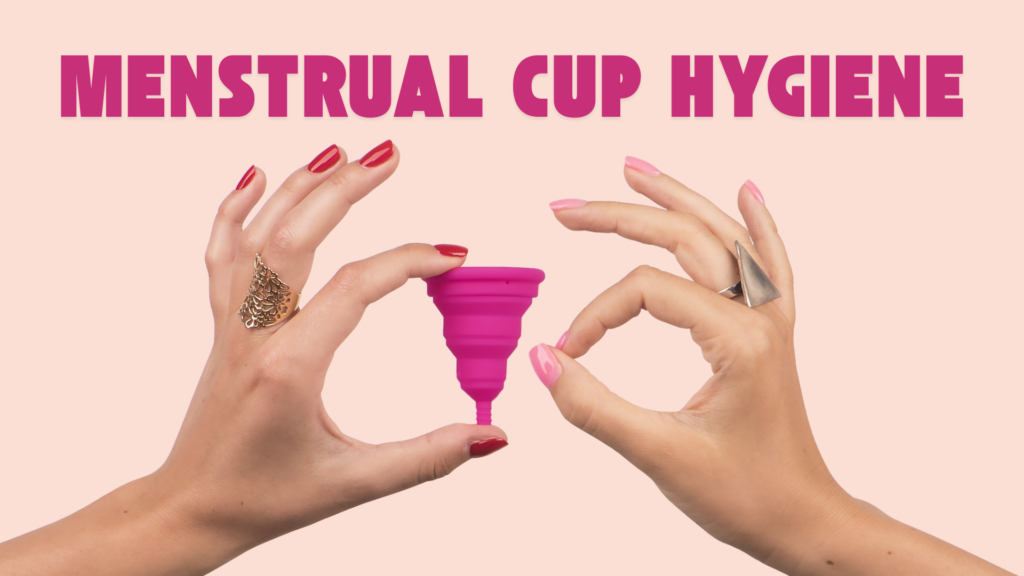
Menstrual cup hygiene is essential for ensuring safety, durability, and comfort. A well-maintained menstrual cup prevents infections, odors, and material degradation. This guide will walk you through the best practices for cleaning, sterilizing, and maintaining your menstrual cup.
Why Menstrual Cup Hygiene is Important
A menstrual cup sits inside your body for several hours at a time, so keeping it clean helps prevent infections and ensures a safe experience. Proper menstrual cup hygiene also extends the cup’s lifespan and maintains its material integrity. Maintaining should be a priority for every user to ensure safe and comfortable use.
Step-by-Step Guide to Menstrual Cup Hygiene
1. Cleaning During Your Period
- Empty the Cup Regularly: It is recommended to empty your cup every 8–12 hours to prevent overflow and maintain.
- Rinse with Water: After emptying, rinse the cup thoroughly with cold water first (to prevent staining) and then wash with warm water to maintain.
- Use Mild, Fragrance-Free Soap: Avoid scented soaps or harsh chemicals that may irritate the vaginal area or degrade the cup material, affecting menstrual cup hygiene.
- Ensure Proper Rinsing: Soap residue can cause irritation. Rinse the cup well before reinserting to maintain optimal hygiene.
2. Deep Cleaning After Each Cycle
- Boiling Method: Submerge the cup in boiling water for 3–5 minutes to kill bacteria and ensure proper hygiene. Ensure it does not touch the bottom of the pot, as direct heat may damage the silicone.
- Sterilization Tablets: These are an alternative to boiling and help maintain hygiene effectively. Follow the instructions on the packaging.
- Hydrogen Peroxide Solution: If your cup has stains, soaking it in a mixture of hydrogen peroxide and water (1:1 ratio) for a few hours can improve hygiene.
3. Proper Storage
- Air-Dry Completely: Ensure your cup is completely dry before storing it to maintain menstrual cup hygiene.
- Use a Breathable Pouch: Store the cup in a cotton pouch or a ventilated container. Avoid airtight containers, as they can trap moisture and compromise menstrual cup hygiene.
Do’s and Don’ts of Menstrual Cup Hygiene
✅ Do’s:
- Wash your hands before handling your cup to ensure menstrual cup hygiene.
- Rinse thoroughly after cleaning to remove all soap or disinfectant residues and maintain menstrual cup hygiene.
- Inspect your cup regularly for signs of wear and tear to uphold hygiene.
- Store in a dry, well-ventilated area to promote hygiene.
❌ Don’ts:
- Do not use scented soaps, alcohol, or harsh chemicals to clean your cup as they may compromise hygiene.
- Avoid scrubbing with abrasive materials, which can damage the cup surface and affect hygiene.
- Never store your cup in a sealed plastic bag or airtight container as it can lead to poor hygiene.
- Do not expose your cup to direct sunlight for extended periods to maintain hygiene.
When to Replace Your Menstrual Cup
A high-quality menstrual cup can last up to 5–10 years with proper care. However, consider replacing your cup if you notice:
- Persistent odor that does not go away even after sterilization, affecting menstrual cup hygiene.
- Visible cracks, tears, or deformations that compromise menstrual cup hygiene.
- Sticky or chalky texture, which indicates poor hygiene.
Final Thoughts
By following these simple hygiene practices, you can keep your menstrual cup in excellent condition for years to come. Not only does this ensure a safe and comfortable experience, but it also maximizes the benefits of using a menstrual cup as a sustainable period solution.
Regular maintenance is the key to safe and long-term use. Make menstrual cup hygiene a priority, and enjoy a hassle-free, eco-friendly period! Proper menstrual cup hygiene ensures you have a worry-free and healthy period every cycle.

